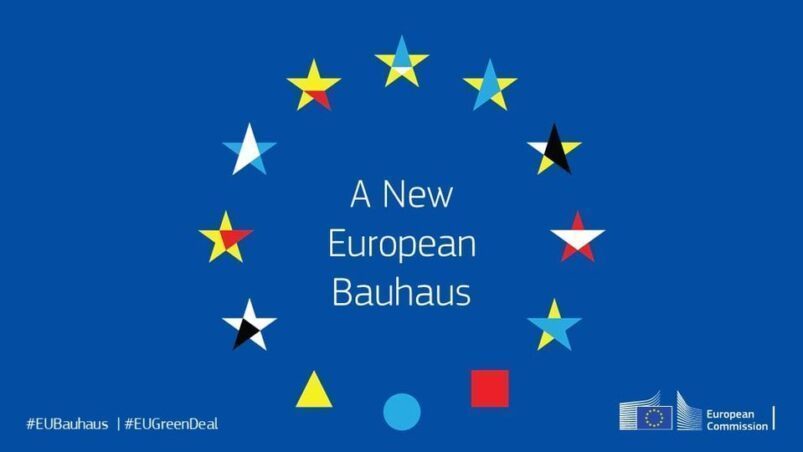Last January, the European Commission announced the beginning of the first phase of the New European Bauhaus initiative (NEB). The move marks an opportunity for cultural heritage organisations to impact Europe’s sustainability policies and the future in general.
The NEB movement could strengthen the role of culture and heritage in European citizens’ daily lives, pleaded Europa Nostra. But what exactly are the aims of the NEB? And how and why should cultural heritage get involved?

Bringing the Green Deal to life
Ursula von der Leyen, President of the European Commission, mentioned in an article in October 2020 the urgency to rethink and plan Europe’s future. The NEB movement will serve as a collaborative design and creative space. Architects, artists, students, scientists, engineers and designers work together to bring the European Green Deal to life and closer to the people of Europe.
For now, the NEB movement is looking for already existing sustainable, inclusive and life-quality enriching projects that can become partners. They will appear on the NEB’s website and the best examples will receive a prize in September 2021. After this, the NEB will post calls for proposals for new projects. The third phase, planned for January 2023, will focus on sharing gained knowledge from the pilots with a broad European audience.
The role of cultural heritage
The NEB’s message sounds hopeful for cultural (heritage) organisations. The climate problem will not be solved by merely looking at sustainable technologies. Von der Leyen emphasised in her article that innovations to stop climate change should “always be combined with culture and arts.” The movement could mark a new understanding of how Europeans live their daily life.
Lilian Grootswagers, president of the advisory board at Future for Religious Heritage, welcomed the initiative with open arms. “It is clear that the NEB wants to include the cultural sector in scaping Europe’s future”, she said. “Now, it is our job as cultural professionals to take our chance and make sure we get involved in this movement.”
Culture Action Europe recently reported that some critics opposed the term “Bauhaus”. The name would be, for example, too Eurocentric. “The NEB is not what Bauhaus was, but what we as Europeans together make of it”, Grootswagers stated. “This movement hopefully offers a starting point. But the cultural sector needs to make sure it is actively contributing.”
”The NEB is not what Bauhaus was, but what we as Europeans together make of it”
Funds to be secured
While the NEB initiative has been searching for existing projects, funding for new projects is still undecided, ScienceBusiness reported in January. When discussing the issue, Members of the European Parliament (MEP’s) stated that the supported projects’ money would not come from cultural and educational programmes as Creative Europe and Erasmus+.
Several MEP’s suggested the EU’s €750 billion recovery package and the structural funds as potential financing sources for the NEB. A decision is yet to be made, but it is clear that the NEB movement marks a massive opportunity for cultural heritage organisations to get involved in the future of Europe. Now is the time for the heritage sector to step up and start organizing its part.
Sources: Lilian Grootswagers, Culture Action Europe, Europa Nostra, European Commission, New European Bauhaus and ScienceBusiness
Learn more about cultural heritage in Europe, or check out one of the tags below:

